Since Spring 2024, dedicated volunteers from across Cornwall have been contributing to essential habitat management, infrastructure, and access works at the Helman Tor reserves complex. Their efforts have significantly boosted Cornwall Wildlife Trust’s capacity to deliver restoration works that benefit key habitats, crucial for the Cornish landscape and wildlife.
Power of the people: the volunteers transforming Helman Tor
Alex Eatough
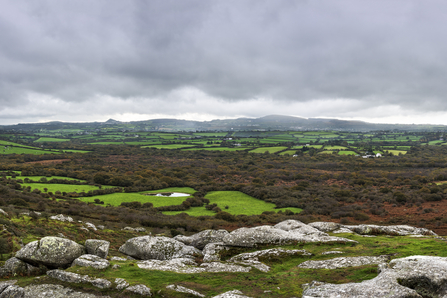
View from Helman Tor
From installing fence lines in knee-deep mire to removing scrub in the depths of winter, the Helman Tor Practical Conservation volunteers have demonstrated inspiring resilience and motivation. During March and April this year, volunteers focused on coppicing hazel at North Redmoor Nature Reserve and creating deer-proof hedges from the cut materials.
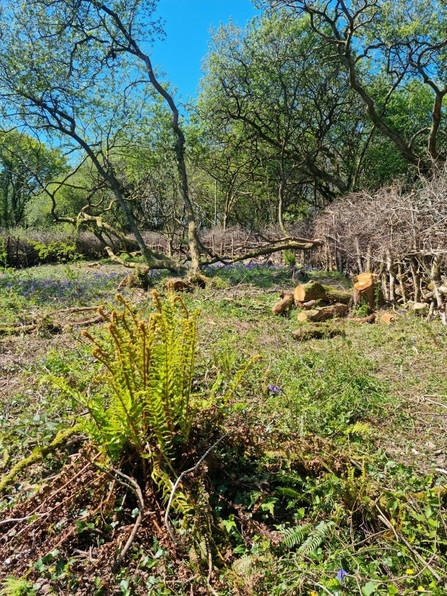
Ongoing coppicing works are essential for creating a mosaic of habitats and maintaining diversity and dynamism in the landscape
Redmoor, a 97-hectare reserve, features heathland, mire, freshwater, grassland, woodland, and successional scrub. These habitats provide refuge for a wide variety of flora and fauna, including some particularly endangered priority species such as the hazel dormouse, willow tit and marsh fritillary butterfly. Designated as an SSSI in 1979, Redmoor’s habitat diversity remains vital for conservation management.
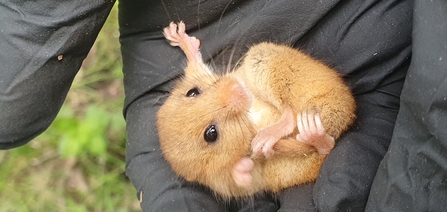
Hazel Dormouse, Alex Eatough
The practice of coppicing
At the heart of woodland coppicing is the humble hazel, renowned for its remarkable regenerative abilities. Coppicing, a traditional woodland management technique, involves cutting trees at ground level to stimulate growth, and was historically used for producing flexible, durable wood. This practice not only sustains timber production but also prolongs tree life, creating varied woodland structures beneficial for a myriad of woodland creatures. Historically, as industrial practices modernised, coppicing declined, leading to homogenous woodlands and a loss of habitat diversity. Therefore, reviving and protecting coppicing is not merely about preserving a historic craft; it is an essential act of stewardship that safeguards biodiversity and reinforces the resilience of our ecosystems.
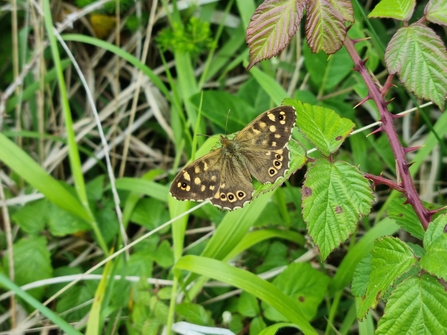
Speckled Wood Butterfly, Alex Eatough
Coppicing creates sunlit glades amid shaded woodlands, fostering diverse plant growth and supporting species such as butterflies and birds. A rotational strategy, cutting only designated sections at intervals, minimizes habitat disruption. This approach supports species throughout their life cycles, maintaining biodiversity.
At Helman Tor, volunteers use traditional hand tools for coppicing, cutting stems near the base to promote healthy regrowth. Hazel regenerates over 5–7 years, balancing vigorous new growth with maintenance of woodland structure. The coppiced wood is repurposed for deer-proof hedges, which protect new growth and provide habitats for small mammals and invertebrates.
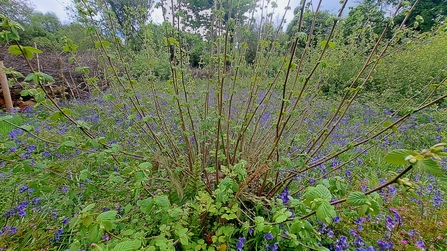
A regenerating Hazel Stool, Adam Toulson-Hampshire
Rotational coppicing fosters varied growth stages, from wildflower-dominated clearings to mature hazel canopies. Newly cut areas support wildflowers and invertebrates, while older growth provides shelter for birds and small mammals. As the canopy matures, species like bluebells and wood sorrel flourish while fresh hazel regrowth supports hazel dormice and other wildlife. Maintaining this mosaic is crucial for species that thrive in dynamic environments.
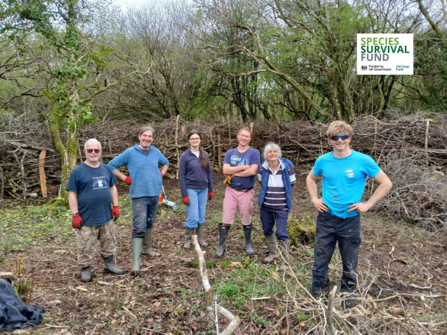
Helman Tor volunteers, Rob Hooson
Future plans for coppicing at Redmoor
Ongoing monitoring, using techniques such as camera trapping, dormouse box inspections, and AudioMoth traps, will guide future conservation management at the reserve. We plan to continue established coppice rotations on a cycle of 5 to 7 years to ensure that the woodland remains dynamic and biologically diverse. The Helman Tor volunteers play a vital role in these efforts, and their dedication makes a significant difference in conserving Cornwall’s natural heritage. Going forward, the Mid-Cornwall Reserves team is excited to further explore traditional management techniques and emerging conservation practices alongside such a fantastic group of people.
This project is funded by the Government’s Species Survival Fund. The fund was developed by Defra and its arm’s-length bodies. It is being delivered by the National Lottery Heritage Fund in partnership with Natural England and the Environment Agency.



